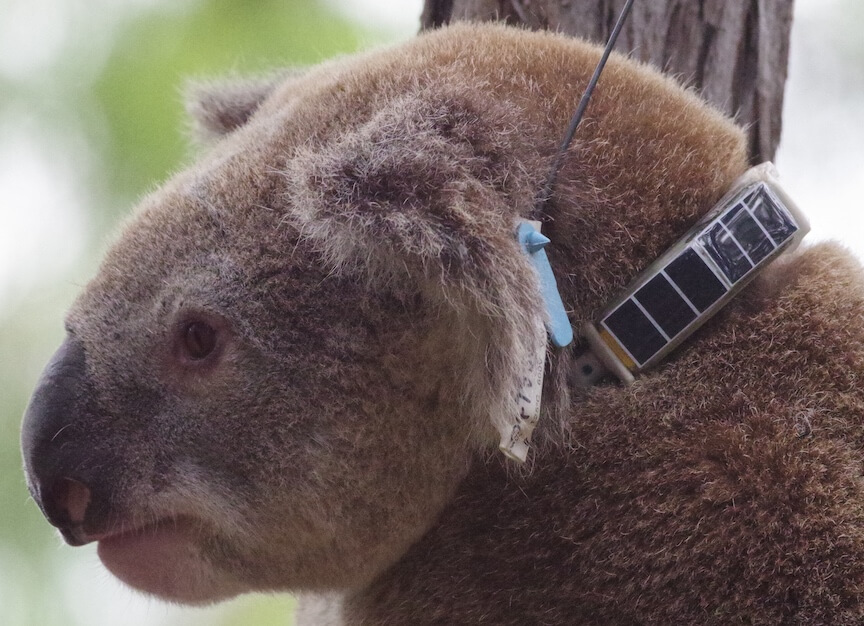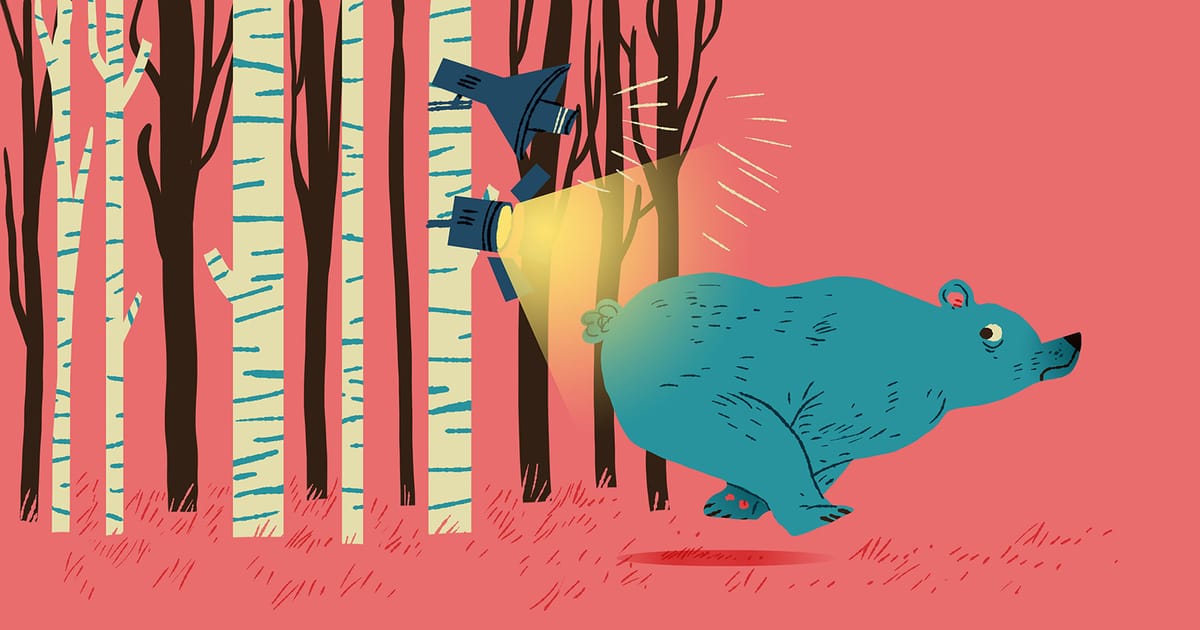Welcome back to the incredibly sporadic series in which I give you a quick run through five things from the conservation tech world that have caught my attention in recent weeks.
Before we get into it, a note.. I seem to launch this series aspirationally every year, so while I'd love to run this as a monthly blog, I'm making no promises about when the next update will appear. It may be next month, it may be next year! So enjoy this update, and let me know in the comments below what news has caught your eye - getting some comments may guilt me into more regular updates, and I'd also love to learn about some new projects or people that haven't popped up in my feeds!
1. Felipe Spina Avino: Improving connectivity to strengthen the Monitoring and Protection of Indigenous Territories in the Brazilian Amazon
Longtime WILDLABS member @Felipe_spina shared an update on his work contributing to the 'Connection Peoples of the Forest' project. This initiative is increasing the capacity of indigenous peoples to monitor and protect the Amazon by improving their access to fast internet in the Indigenous Territories of the Brazilian Amazon in the states of Rondônia and Acre. The project aims to bring fast internet by 2025 to about 1 million people from more than 5,000 indigenous, quilombola and riverine communities scattered throughout the Brazilian Amazon. Check out Felipe's workshop update below and learn more about this work here.
Felipe Spina Avino on LinkedIn: #conexaopovosdafloresta #coiab #conaq #cns #amazon #conservation #wwf
Melhorando a conectividade para fortalecer o Monitoramento e a Proteção dos Territórios Indígenas na Amazônia Brasileira. Tenho orgulho de ter passado os…
2. Shan Shui Conservation Centre: Bear Warning System
Effective Early Warning Systems have a significant role to play in alleviating Human-Wildlife Conflict, and incorporating AI into these systems is an ongoing challenge. I'm curious to hear more about this system shared by the Shah Shui Conservation Centre: 'We are testing out the bear warning system in Sangjiangyuan. When AI identified bears in the real-time image, it sends SMS to residents. In 1 month, the system sent 858 bear warnings, with 98% accuracy rate. We will further optimize the system and explore effective bear proofs'. We'll see what we can do to get them onto Variety Hour so we can find out more!
We are testing out the bear warning system in Sangjiangyuan. When AI identified bears in the real-time image, it sends SMS to residents.
— Shan Shui Conservation Center (@ShanCenter) September 5, 2023
In 1 month, the system sent 858 bear warnings, with 98% accuracy rate. We will further optimize the system and explore effective bear proofs pic.twitter.com/9aMvjXVy8m
3. Katie Dunkley: Open-Source design guide for a low-cost, long-running aquatic stereo camera
We're seeing this new open access publication from Kate Dunkley and co getting a heap of attention on our socials, so it's definitely answering an innovation challenge from the marine community. They've developed and shared a t complete hardware and software solutions for a long-running, open-source, underwater stereo camera rig, costing £1337. This stereo camera can continuously record aquatic species and their behaviours/interactions in high resolution (1080 p and 30 fps) and in 3D, over multiple days. They provide full design guides for the cameras and a travel-friendly rig, and include guidance and open-source code for calibrating the cameras in space and time. They also show how these cameras could be used to track animals' body parts and positions, and how their size, posture and behaviour can be inferred.
So, if you've ever wanted to continuously film underwater species and their behaviours for up to 2 days at a low cost, learn more here.
By filming aquatic species using two cameras in stereo, this underwater camera system also allows users to track individuals (and or postures) in 3D space. Our paper provides a guide and open-source code detailing how to do this. pic.twitter.com/1Bq8bmPnJY
— Katie Dunkley (@14Katie41) June 16, 2023
4. Matthew Stanton: Tracking Koalas & Milsar GPS tag review
The cute tagged koala sealed this, but I also found @M_Stanton's review of his experience with Milsar GPS tags a thoughtful read, and a great reply to @ChristineWilkinson's ask for recommendations for GPS-GSM collars. Check out his reply to see an outline of the benefits and challenges his project experienced using the milsar units. Read more >

5. Kevin Brown: Follow for fundraising insights (on linkedin)
This one is a bit of an odd one out, I'll admit, but it may prove to be incredibly useful for some of you! Fundraising is such a critical aspect of conservation and conservation tech projects, and concerns about funding consistently come out at the top of the challenges our community talks about facing in their responses to our State of Conservation Tech survey every year. So if fundraising is at all part of your work, Kevin might be someone to follow on linkedin.
I find that his posts vary from useful prompts to nudge and refine how I'm thinking about fundraising, pitching and branding, to more in-depth insights in the global funding landscape. I've pulled out a few of my favourite posts below, so you can have a quick taste of what he talks about:
Kevin L. Brown on LinkedIn: #fundraising #nonprofit #brand | 55 comments
4 insights for your impact data and #fundraising: 1️⃣ You can’t raise money with an RCT alone. 2️⃣ An M&E report (itself) doesn’t land you funding. 3️⃣… | 55 comments on LinkedIn
Kevin L. Brown on LinkedIn: #india #foundations #philanthropy #nonprofits #brands | 331 comments
Stunning wealth inequality, even in philanthropy: Of 260,000 global foundations — just 47 in Africa. And 95% are based in Europe and North America. How… | 331 comments on LinkedIn
Bonus (partial paywall): Careers in Sustainability and Climate, Fast Company Series
As a growing number of people decide to switch careers to work on climate change, Fast Company is running a series of interviews with people in climate-related jobs about their day-to-day work. They've featured Microsoft's new Chief Sustainability Officer Melanie Nakagawa, carbon removal startup founder Mary Yap, and Google's Chief Sustainability Officer, Kate Brandt.
Some interviews are behind a paywall, others are freely accessible, so I've included this as 'bonus' recommendation. There are some interesting insights into how corporates are thinking about sustainability and climate. Each interview illuminates potential career paths into climate work, insights that are relevant if you're looking to move into the conservation technology world more broadly.
To wrap this recommendation up, here is a highlight from the interview piece with Microsoft's Melanie Nakagawa:
FC: You’ve touched on this a little already, but what makes you optimistic that the world can address climate change?
MN: I think three things: [First], just seeing all the talent that’s coming into this space. There’s so many people from tech moving into climate tech. There’s some phenomenal CEOs. There are just so many incredibly talented people who are dedicating their life mission to sustainability. How can one not be optimistic when you see just this growing, talented workforce showing us that we can get there?
The second reason I’m optimistic is we started the flywheel of success already. Of course, there are questions around the speed and scale of that flywheel. But there already are successes. You have the world coming together in 2015 to demonstrate our global commitment to the climate challenge. You have large corporations not only making these pledges, but then showing their progress. You see more investment in this space, you see technology breakthroughs.
And then the optimism honestly comes from the technology breakthroughs we don’t even know about. Working at Microsoft and seeing where we are on AI, and the opportunity that AI has for dramatically scaling sustainability wins in this space, really fills me with even more optimism.
More here:

A day in the life of a chief sustainability officer: Q&A with Microsoft's Melanie Nakagawa
Melanie Nakagawa recently joined Microsoft as chief sustainability officer. Here's what her job entails.
 Fast Company
Fast Company
13 September 2023 6:23am
Hi Steph! Nice with this "sporadic series"!
The bear alarm in China reminds me of the Bear Repeller by the Hack the Planet guys:

Using AI to keep bears, humans and livestock safe
The 7-step plan for doing something that has never been done before...
 Q42 Engineering
Q42 Engineering
/Lars





Lars Holst Hansen
Aarhus University